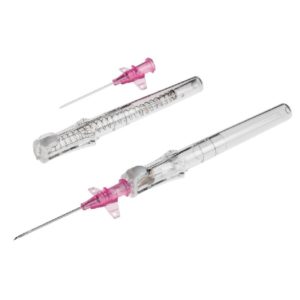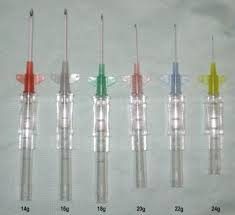Over-the-needle catheters (ONCs) are the type of catheter most often used for initiating IV therapy. An ONC consists of a metal stylet, or needle, that pierces the skin and a flexible catheter, usually made of silicone or Teflon, that is threaded into the vein. Familiarize yourself with the function of the safety features of the ONC. The most common safety features include the deployment of a shield over the sharp end of the needle, or a spring-activated mechanism that retracts the needle, sheathing it in the plastic handle.

Select the IV catheter size you will use based on the patient and on the reason for IV therapy. For most adults, a 20- or 22-gauge catheter is adequate for infusing fluids and medication. For children, older adults, and anyone who has small or fragile veins, consider a 22- or 24-gauge catheter. If the purpose of your IV is to deliver large quantities of fluids at a rapid rate or blood or blood products, use a larger catheter, such as a 16- or 18-gauge. Note that the larger the gauge number, the smaller the needle.

